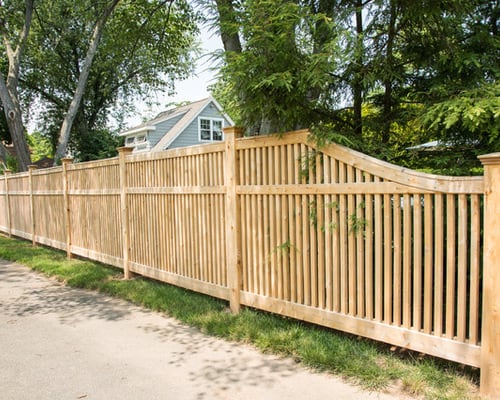Installing Picket Fence Panels have historically been made of wood, though other materials are available today.
Vinyl is a common choice because it is low-maintenance and attractive — often mimicking the look of wood panels. Before Installing Picket Fence Panels, the builder should be sure to consider the different materials available, including hardware to hold the fence together and choose the best materials for his or her application. Once the material has been chosen, carefully research different installation methods to ensure a smooth and quick process. Vinyl picket fence panels will be slightly more difficult to install than wood panels, so the builder should weigh the convenience of low maintenance after installation against the difficulty of installation.
Ideas for Installing Picket Fence Panels

Wooden picket fence panels are easier to install because the panels and the posts of the fence can be cut to length on-site, and the wood can be easily modified or shimmed should gaps exist between the posts and the panels. Vinyl picket fence panels cannot be cut on site, nor can vinyl posts. The vinyl fencing materials are prefabricated to certain specifications, and if the posts are set too far apart, the panels can fall out. If the posts are too close together, the panels may warp or crack. Researching the manufacturer’s specifications and carefully measuring the distance between posts will save significant headaches and possible problems down the road.

Before installing picket fence panels, it is important to decide what style of picket fence panels will look best. Some picket fences feature pickets set far apart, creating a more open, airy look. Other pickets are set close together to enhance privacy. The height of the pickets will also have an effect on both the functionality and aesthetic of the fence, so be sure to choose carefully. Picket fence panels come in a variety of styles and sizes, both in wood and vinyl, so if privacy is a concern, choose larger pickets. If traditional aesthetics is a priority, choose shorter pickets that are set far apart.

The panels will bend, warp, crack, or otherwise become damaged if not properly affixed to the fence posts. Be sure the fence posts are sunk into the ground properly — this means pouring concrete footings properly to avoid heaving during frosts — and that they are set at the proper distance from each other. Use stainless steel hardware or other corrosion and rust-resistant materials to affix the panels to the posts. Sub-par hardware will wear out quickly, potentially damaging the panels and the posts.
I thought that you made a good point about how wooden picket fence panels can be easier to install. It seems like being able to make necessary adjustments to my wooden panels by cutting them would be a great advantage. That would be an advantage if I change my mind on the design by changing the dimensions of my posts. Knowing that is starting to make me think about using wooden posts for my new fence that I’m working on this spring. Thanks for the tips!